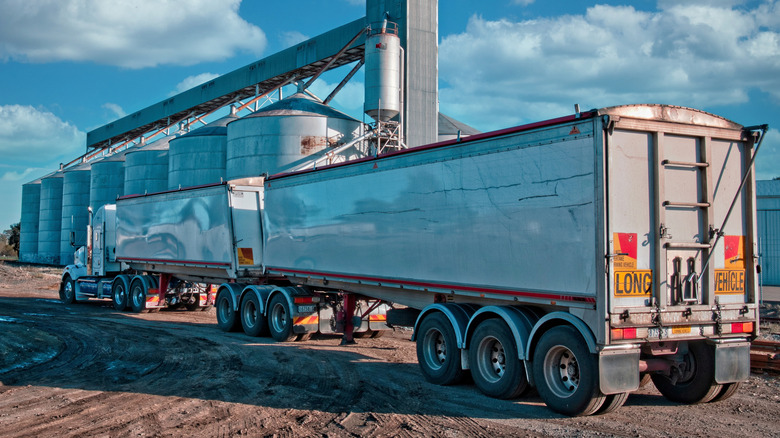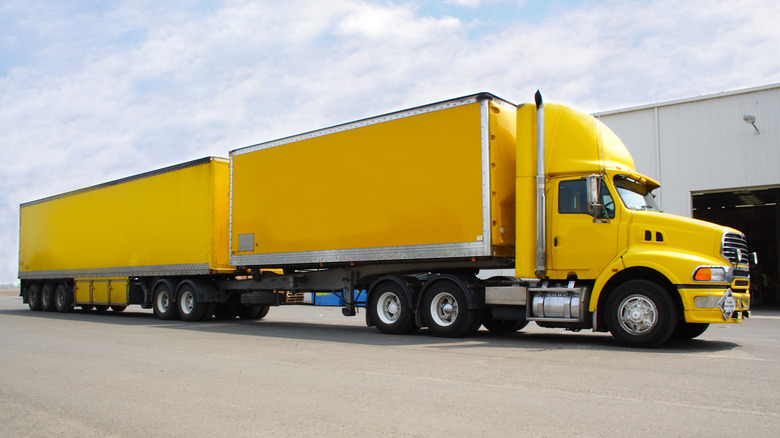Why Are Some Semi-Trucks Called 'B-Doubles' In Australia?
The reason why some semi-trucks are called 'B-doubles' in Australia can be traced to the country's National Heavy Vehicle Regulator (NHVR) and its classes of heavy vehicles in the Heavy Vehicle National Law (HVNL). The HVNL, in its own words, "...provides for three classes of heavy vehicle as a means of managing access for different types of heavy vehicles." B-doubles fall under Class 2 heavy vehicles in the HVNL.
According to these Australian regulations, "B-double means a combination consisting of a prime mover towing 2 semitrailers, with the first semitrailer being attached directly to the prime mover by a fifth wheel coupling and the second semitrailer being mounted on the rear of the first semitrailer by a fifth wheel coupling on the first semitrailer." In other words, a B-double is a semi-truck with two trailers, both of which are connected to it using fifth-wheel couplings.
The origin of the B-double truck goes back to Bob Pearson, who has been called the 'father of the B-double.' Pearson worked for the Country Roads Board back in 1979. That was when Pearson received a request to allow the Canadian version of B-doubles — called B-trains — on Australia's roads. Pearson visited Canada in 1981, saw the trucks, and returned to Australia with a recommendation that they be allowed. The first state to allow B-doubles was Western Australia, followed by successful trials in the rest of the country, with Tasmania being the final state to approve them. Now they roam all over the country, joined by some of the coolest Australian muscle cars ever built.
What else is there to know about B-doubles in Australia?
While B-doubles are a very common form of heavy truck in Australia, they should not be confused with road trains. Road trains are typically defined as a B-triple, a semi-truck with three trailers connected using fifth wheel couplings, or even greater numbers of trailers. These trains can grow to extraordinary sizes, including one 110-ton Aussie road train that was hauled by a Land Rover Discovery across the Outback.
There are specific roads that are approved for use by B-double trucks in Australia. While road trains tend to be restricted to remote and regional areas due to their extreme length, B-doubles commonly travel both urban areas and highways. For any routes that are not on roads approved for B-double trucks, a permit is required. For travel between and within Victoria, Queensland, New South Wales, the Australian Capital Territory, Tasmania, and South Australia, permits can be processed by the NHVR. For Western Australia and the Northern Territory, permits must be obtained through that individual state or territory's transportation authority.
To be legal on the majority of Australian highways, a B-double truck cannot be any longer than 26 meters in length. This length includes that of the semi-truck that is pulling both trailers, such as the Freightliner Cascadia, a popular truck used for pulling B-doubles in Australia and for which Cummins is experimenting with a hydrogen engine. Today, it is estimated that there are well over 10,000 B-doubles on the roads of Australia, which carry more goods than any other truck configuration.

